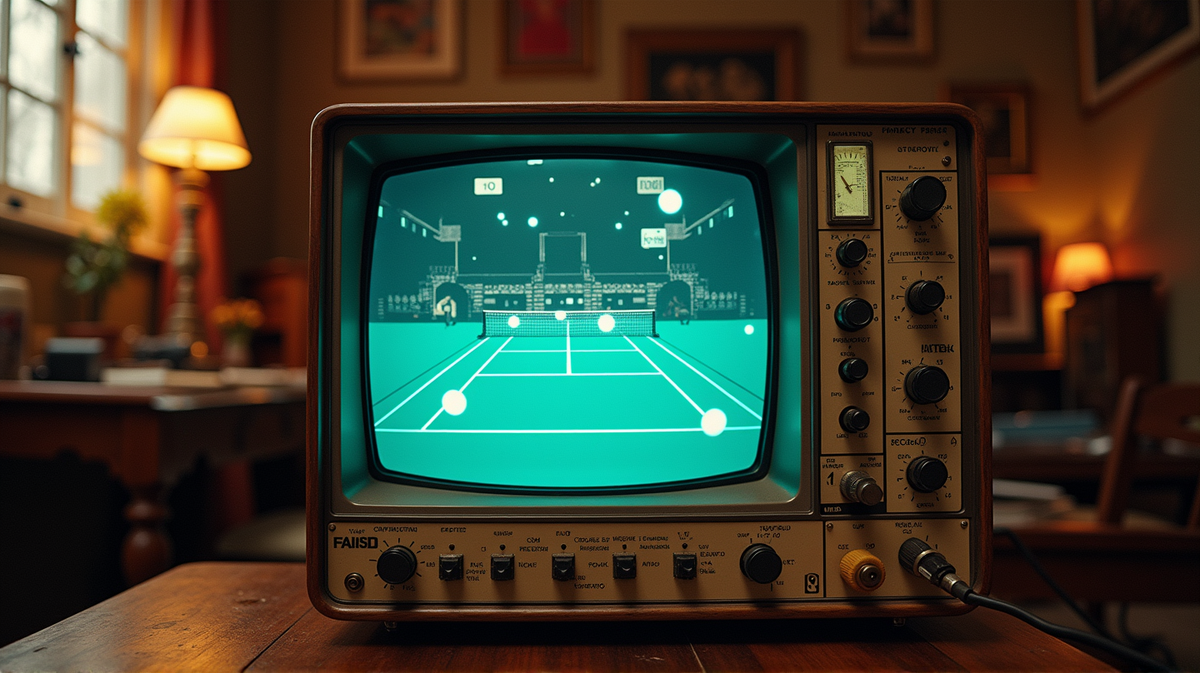Unveiling the Hidden Pioneer: The True First Video Game Before Pong!
Step back in time and discover 'Tennis for Two', a groundbreaking yet forgotten invention marking the dawn of video gaming history.

The history books may have glossed over it, but those in the know recognize Tennis for Two as the true ancestor of all video games. Long before Pong was captivating audiences, an ingenious creation was quietly unfolding in a laboratory amid oscilloscopes and analog computers. The tale of Tennis for Two is one of innovation and forgotten triumph, brought to life in the late 1950s by physicist William Higinbotham.
A Game Born at Brookhaven National Laboratory
Invented in 1958, Tennis for Two was more than just a simple pastime; it was a groundbreaking effort in interactivity. Utilizing an analog computer and an oscilloscope, Higinbotham crafted this early masterpiece in just three weeks for a public exhibition. Visitors were charmed as they engaged in virtual tennis rallies using dials and buttons, marking a monumental leap from static displays to dynamic interaction. The ball’s trajectory, affected by wind resistance, introduced a level of realism unseen at the time.
Forgotten, Yet Formative: The Legacy of Tennis for Two
Despite its initial popularity, the game would be dismantled and fade into obscurity, only to be revived decades later in an unexpected arena: the courtroom. During the patent litigation wars of the 1970s, Tennis for Two became crucial evidence, showcasing pre-existing technology that aimed to challenge newly claimed patents by companies like Magnavox. Although it did not sway the court’s final decision, the lawsuit cemented its place in history as a pioneer in interactive entertainment.
From Lab Curiosities to Household Staples
The early era of video games was characterized by confined developments, existing predominantly within academic and governmental institutions. This restricted exposure contributed to the misattribution of the “first video game” title to Pong. However, the likes of Computer Space and The Oregon Trail also paved the way for the household names we know today.
How Pong Stole the Spotlight
Though Tennis for Two had long predated its commercial successors, Pong’s release on the Magnavox Odyssey in the early 1970s captured public imagination. As the Odyssey became the first widely available home gaming console, Pong inherited the title of “first” due to its accessibility and striking resemblance to Higinbotham’s creation. Tennis for Two was subsequently overshadowed, consigned to the annals of gaming history rather than celebrated as a formative milestone.
Rediscovering a Legend
As gaming historians continue to comb through the archives, Tennis for Two emerges as a fascinating relic and testament to human creativity in electronic entertainment. According to ComicBook.com, its significance lies not just in being first, but in symbolizing the potential for fun and engagement within the realm of science and technology.
For those who cherish the rich tapestry of gaming history, Tennis for Two offers a poignant reminder that innovation often occurs in the unlikeliest old places, by unsung pioneers seeking simply to delight.





